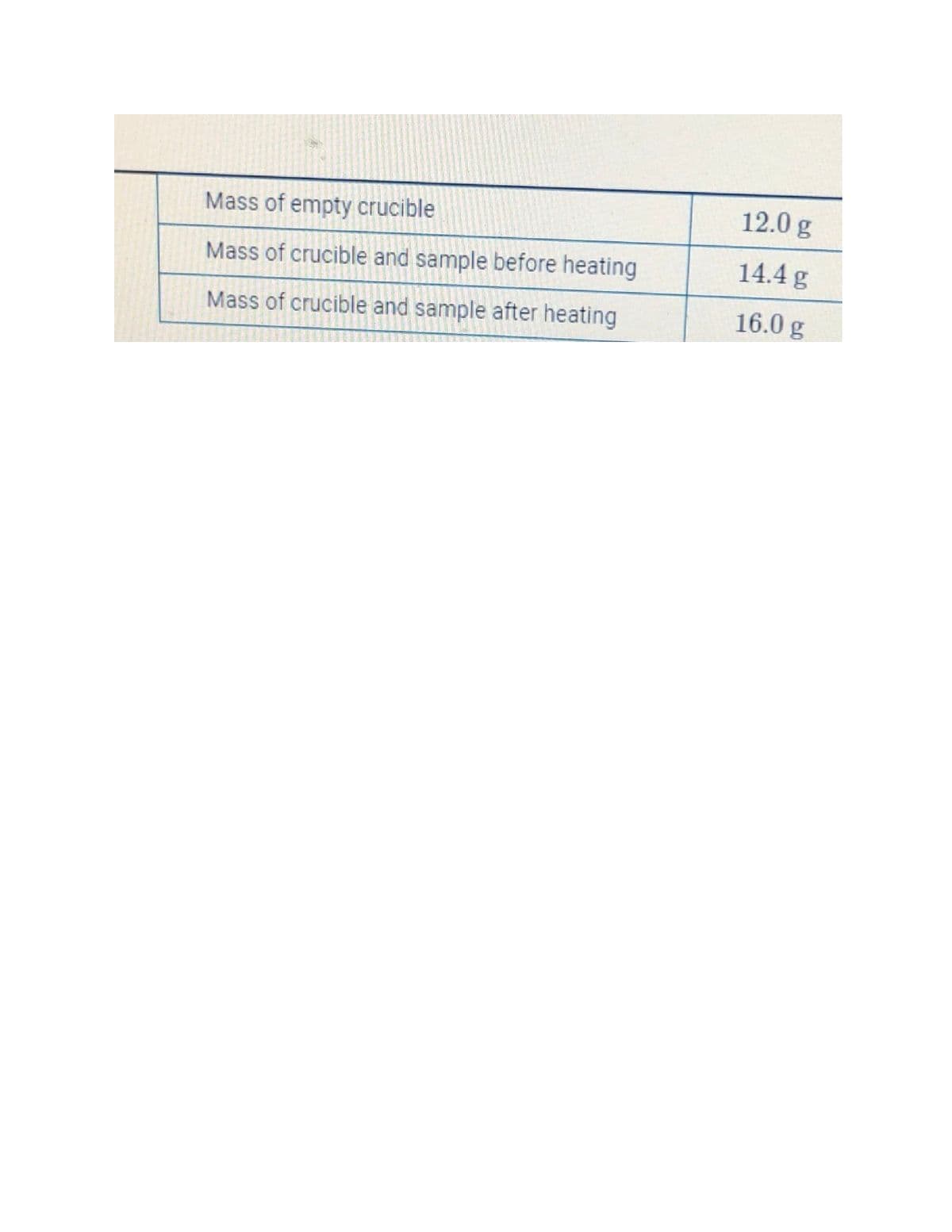A student places a sample of a pure metal in a crucible and heats it strongly in air. Data from the experiment are given in the table above. The final mass was determined after the sample was cooled to room temperature. Which of the following statements related to the experiment is correct? (See attached table) a.) The mass of the sample decreased, so physical changes occurred as the metal first melted and then boiled out of the crucible. b.) The mass of the sample increased, so a chemical change occurred when bonds formed between the metal and another substance. c.) There was nothing for the metal to react with, so only a physical change could have occurred. d.) The sample was only heated, so neither a physical nor a chemical change occurred.
States of Matter
The substance that constitutes everything in the universe is known as matter. Matter comprises atoms which in turn are composed of electrons, protons, and neutrons. Different atoms combine together to give rise to molecules that act as a foundation for all kinds of substances. There are five states of matter based on their energies of attraction, namely solid, liquid, gases, plasma, and BEC (Bose-Einstein condensates).
Chemical Reactions and Equations
When a chemical species is transformed into another chemical species it is said to have undergone a chemical reaction. It consists of breaking existing bonds and forming new bonds by changing the position of electrons. These reactions are best explained using a chemical equation.
A student places a sample of a pure metal in a crucible and heats it strongly in air. Data from the experiment are given in the table above. The final mass was determined after the sample was cooled to room temperature. Which of the following statements related to the experiment is correct? (See attached table)
b.) The mass of the sample increased, so a chemical change occurred when bonds formed between the metal and another substance.

Trending now
This is a popular solution!
Step by step
Solved in 3 steps


